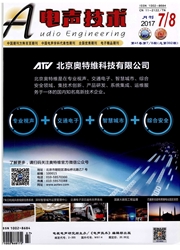

 中文摘要:
中文摘要:
可懂度是评价语言传递信息能力的重要指标。通过主观实验的方法,对白噪声、粉红噪声、Babble噪声以及时间反转信号四种干扰信号和三种单通道语音增强算法在低信噪比(-15~0dB)条件下对汉语可懂度的影响进行了测试和评价。结果表明,四种干扰信号的干扰效果差异明显;单通道语音增强算法不能显著提高汉语可懂度;测试语料选择对汉语可懂度的影响很大;时频域二值掩蔽算法对时间反转信号干扰下在维持和提高汉语可懂度方面存在优势。
 英文摘要:
英文摘要:
Effect of three various single-channel speech enhancement algorithms on the Chinese intelligibility is evaluated by subjective intelligibility tests in the current study. Chinese Mandarin sentences are corrupted by four types of noise including white noise, pink noise, babble noise and time-reversed noise at relatively low signal-to-noise ratios (-15 -0 dB) , and then processed by the three speech enhancement methods. Experiments demonstrate that those noises performance distinctly on disturbing the intelligibility of target speech and different Chinese materials show different results about the intelligibility. Although the Chinese intelligibility can not be improved obviously by single-channel enhancement methods, it is concluded that the binary time-frequency masking method shows advantages on maintaining and improving Chinese intelligibilities cor- rupted by time-reversed noises.
 同期刊论文项目
同期刊论文项目
 同项目期刊论文
同项目期刊论文
 期刊信息
期刊信息
